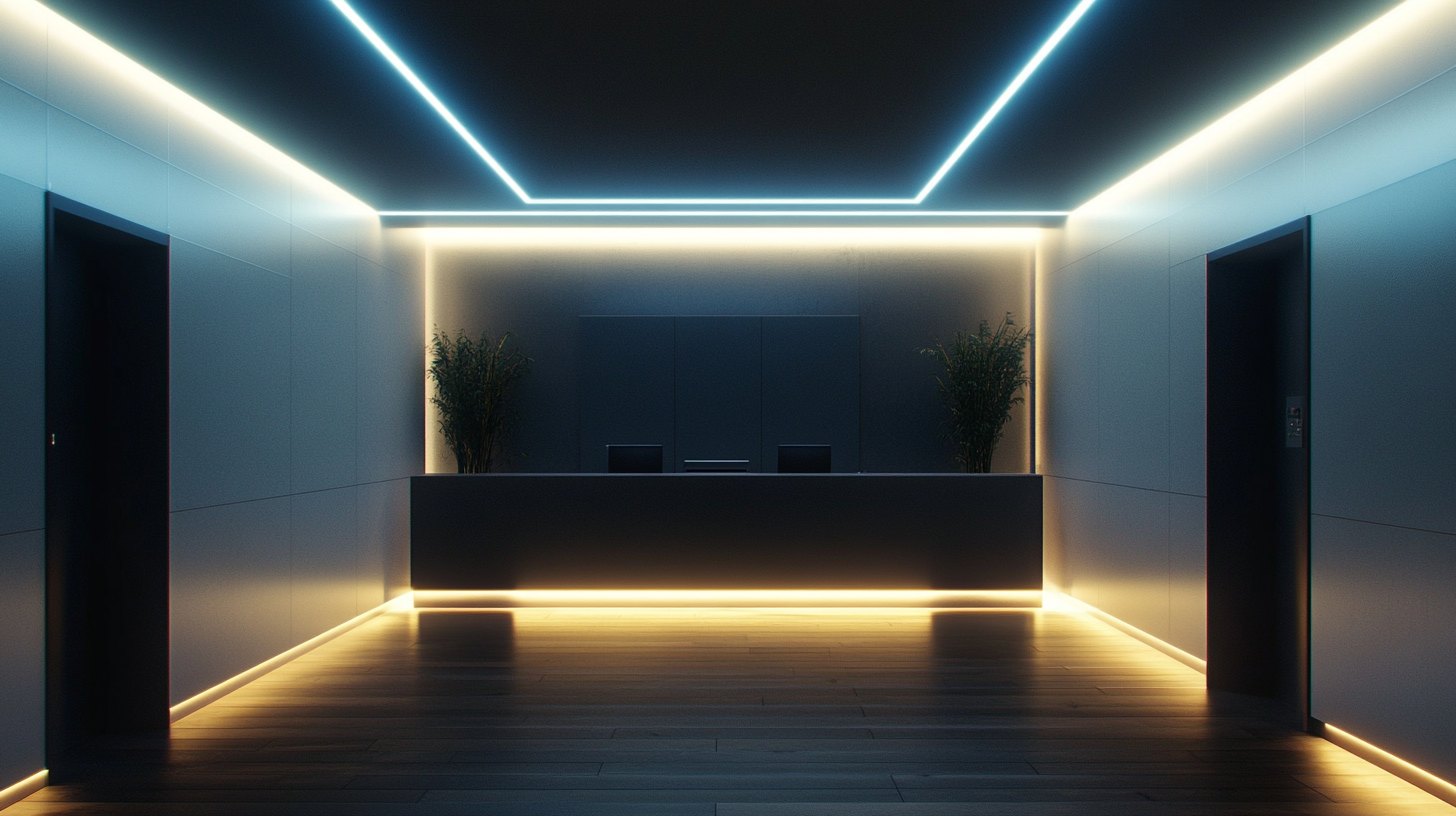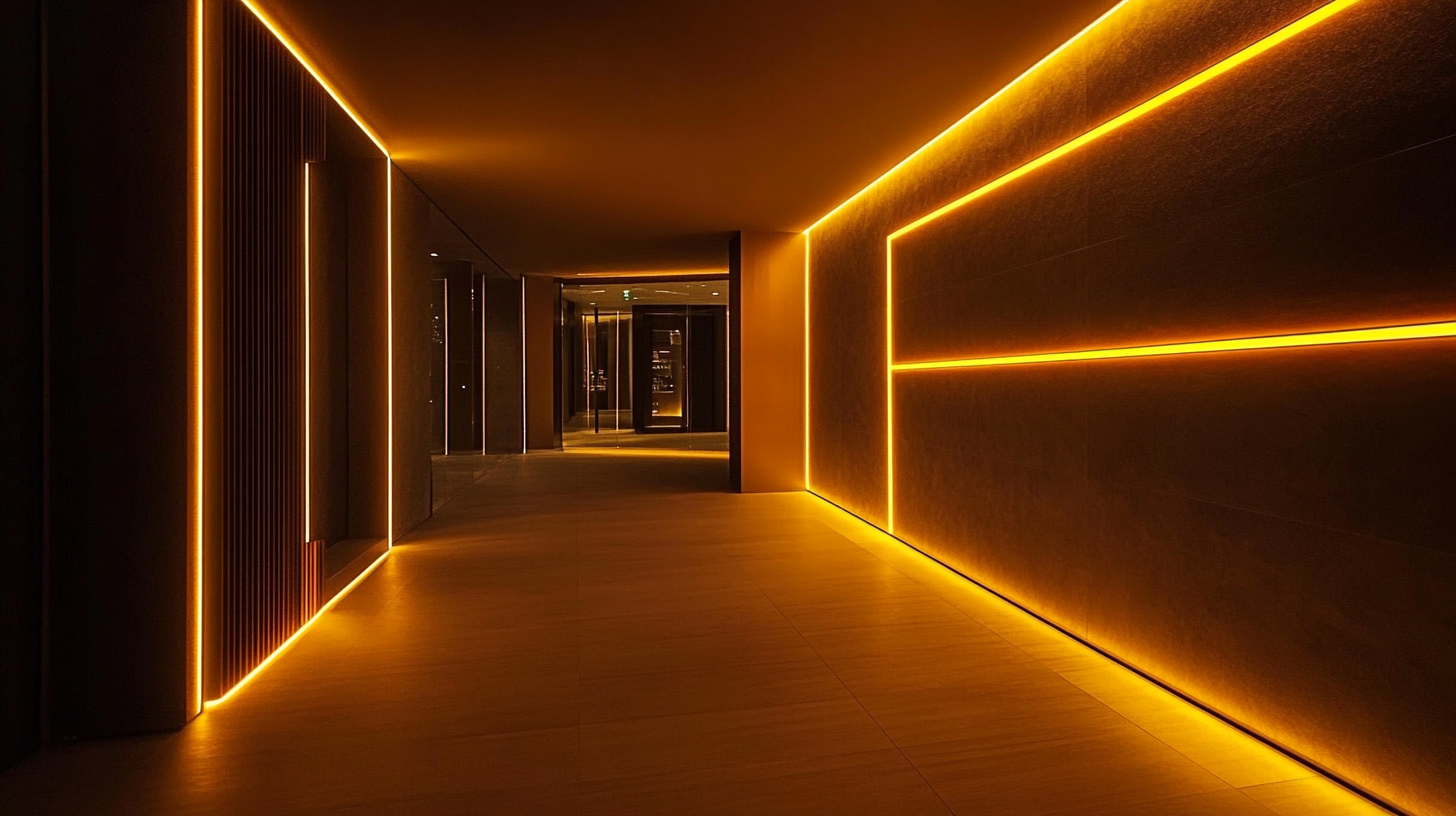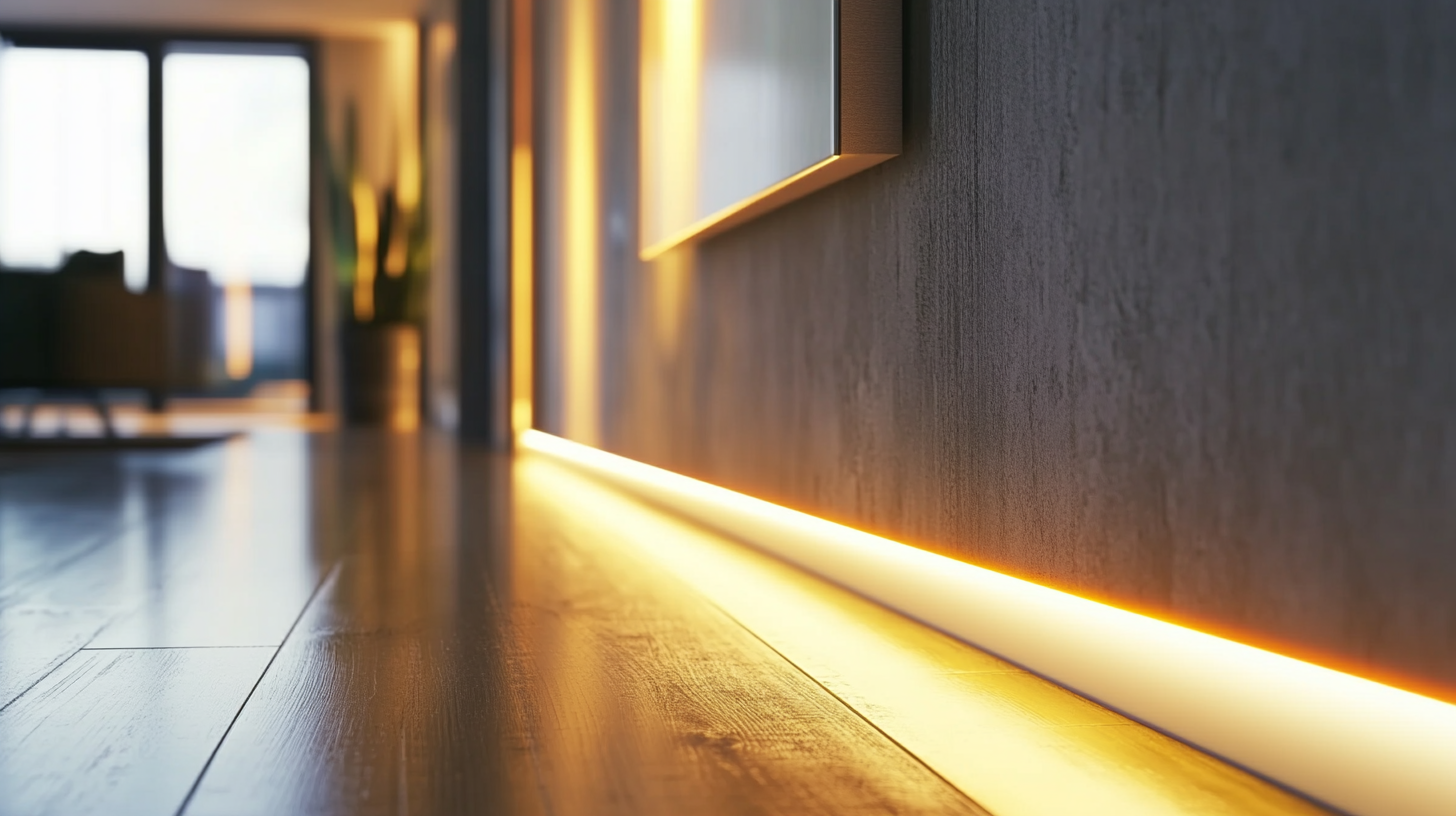Innovative Linear Lighting Designs That Transform Your Space
The evolution of interior lighting has seen a remarkable shift towards innovative linear lighting solutions that not only illuminate spaces but also enhance their overall aesthetic appeal. According to a recent report by MarketsandMarkets, the global linear lighting market is expected to reach USD 20.83 billion by 2025, growing at a CAGR of 6.2% from 2020. This surge in demand highlights the increasing recognition of linear lighting as a versatile and effective design element that can transform any environment, whether residential, commercial, or industrial.
Linear lighting offers numerous advantages, including energy efficiency, uniform light distribution, and creative flexibility, making it a popular choice among architects and designers. The integration of smart technologies and LED advancements further amplifies the potential of linear lighting, allowing for tailored solutions that meet diverse needs and preferences. As we delve into the innovative designs of linear lighting, we will explore how these systems can redefine your space, merge functionality with aesthetics, and contribute to a more sustainable future in lighting design.

Exploring the Aesthetic Appeal of Linear Lighting in Modern Interiors
Linear lighting has increasingly become a favored choice in modern interiors, not just for its functionality but also for its aesthetic appeal. As spaces evolve, the seamless integration of linear lighting can dramatically alter the ambience. According to recent reports, the global linear lighting market is projected to grow by 7.0% annually, underlining the rising demand for elegant yet functional lighting solutions. This trend reflects a broader shift toward designs that offer both visual intrigue and practical illumination.
Contemporary spaces, such as retro-chic venues like The Clubhouse in Istanbul, utilize linear lighting in innovative ways, harmonizing polished oak wood panels and techno-cement floors to create a cohesive aesthetic. The strategic placement of linear fixtures enhances the architectural features while providing essential light. Moreover, as we anticipate the lighting trends for 2024, designers are focusing on multifunctionality, combining aesthetic appeal with practical purposes. The emergence of hybrid lighting solutions that serve as decorative elements while illuminating spaces is set to redefine how we perceive indoor environments.
In kitchens, for example, linear lighting plays a crucial role in elevating the functional aspect of the space. Experts recommend considering lighting that complements kitchen islands, as it enhances not only visibility but also the overall atmosphere. Reports suggest that well-placed linear fixtures can improve task efficiency without compromising style, marrying function with the beauty that modern interior design advocates. As we continue to explore linear lighting’s capabilities, it’s clear that it contributes significantly to modern aesthetic trends, making any space feel more curated and inviting.

Functional Versatility: How Linear Fixtures Adapt to Any Space
Linear lighting fixtures have evolved far beyond their traditional applications, proving to be an embodiment of functional versatility. One of the key advantages of linear designs is their ability to adapt seamlessly to various environments, whether it's a cozy living room, a professional office, or a vibrant retail space. The sleek lines and minimalist aesthetics of linear lighting create a contemporary appeal that enhances any setting while providing the necessary illumination.
Furthermore, the adaptability of linear lighting extends to various mounting options. From surface-mounted fixtures to suspended designs, these versatile options allow for creative flexibility in spatial design. For instance, a suspended linear bar can create an eye-catching centerpiece in a dining area, while surface-mounted fixtures can provide a clean look in hallways or workspaces. The ability to customize light intensity and color temperature further enhances their functionality. By adjusting these elements, users can create different moods and atmospheres that cater to specific activities, whether it’s focused work, relaxation, or social gatherings.
In addition to their aesthetic contributions, linear lighting solutions are also energy-efficient, making them a practical choice for both residential and commercial spaces. With advancements in LED technology, these fixtures not only consume less energy but also possess a longer lifespan, reducing both operational costs and environmental impact. This blend of beauty, adaptability, and sustainability makes linear lighting an excellent choice for transforming spaces into functional and inviting areas.
Innovative Linear Lighting Designs That Transform Your Space
Creative Applications of Linear Lighting in Residential and Commercial Designs
Linear lighting has become a transformative element in both residential and commercial spaces, offering a versatile and creative approach to illumination. According to recent market analyses, the global linear lighting market is projected to grow significantly, reaching $56.4 billion by 2031, with a compound annual growth rate (CAGR) of 11.1% from 2022. This surge reflects a growing demand for innovative lighting solutions that not only enhance aesthetics but also improve functionality in various environments.
In residential settings, linear lighting can be skillfully integrated into architectural designs, providing sleek, minimalistic solutions that accentuate modern interiors. Moreover, these lights are increasingly utilized in kitchens and living areas, where they serve as both task and ambient lighting. For commercial applications, linear lighting is particularly effective in retail and hospitality venues, creating inviting spaces that enhance customer experience and drive engagement. As reported, the linear LED strip fixture market is evolving, catering to diverse mounting types and output voltages, highlighting the flexibility and adaptability of these lighting solutions.
Innovation plays a key role as manufacturers continue to introduce advanced lighting technologies, thereby enhancing energy efficiency and sustainability. The exploration of these creative applications not only showcases the versatility of linear lighting but also underscores its potential to shape the future of design in various sectors. With advancements such as smart lighting systems becoming commonplace, the integration of linear lighting in residential and commercial designs is set to redefine how spaces are utilized and experienced.
Innovative Linear Lighting Designs in Spaces
Sustainable Lighting Solutions: Eco-Friendly Options for Linear Designs
Sustainable lighting solutions are increasingly taking center stage in the design world, particularly when it comes to innovative linear lighting. As we become more conscious of our environmental impact, eco-friendly options are emerging that not only illuminate our spaces but also align with green living principles. Linear lighting, characterized by its long, sleek design, can now be crafted from sustainable materials and powered by energy-efficient technology.
One of the most exciting developments in this area is the use of LED technology, which consumes significantly less energy compared to traditional lighting options. Modern linear fixtures often incorporate smart systems that adapt their brightness based on the time of day or occupancy, further reducing energy use. Additionally, materials like recycled aluminum and sustainably sourced wood are being utilized in the construction of these designs, minimizing waste and promoting responsible sourcing.
Moreover, the aesthetic versatility of linear lighting allows it to seamlessly integrate into various architectural styles while maintaining a commitment to sustainability. Whether used in residential settings or commercial spaces, these eco-friendly solutions enhance the ambiance, all while contributing to a reduced carbon footprint. As designers and consumers continue to prioritize sustainability, innovative linear lighting solutions are becoming a prominent choice for those looking to transform their spaces responsibly.

Future Trends: The Evolution of Linear Lighting Technology and Design
The landscape of linear lighting design is rapidly evolving, driven by technological advancements and a growing emphasis on aesthetics and functionality. As designers and architects look to create spaces that are not only well-lit but also visually striking, the integration of smart technology into linear lighting systems has become a game-changer. This evolution allows for customizable lighting fixtures that can adjust in brightness, color temperature, and even patterns depending on the time of day or the specific mood desired.
Moreover, the sustainability aspect has gained significant traction in linear lighting trends. With a focus on reducing energy consumption, manufacturers are harnessing energy-efficient LED technology that provides longer lifespans and lower electricity usage without compromising on design. These advancements not only contribute to a greener environment but also offer cost-effective solutions for both residential and commercial spaces.
In addition to the functional benefits, linear lighting is becoming a central design element in itself. With a shift toward minimalist and modern aesthetics, designers are embracing sleek lines and innovative forms that make linear lights a statement piece in any room. Whether integrated into ceilings, walls, or furniture, the versatility of linear lighting opens up new possibilities for creative expression, highlighting architectural features while maintaining an elegant ambiance. As we look to the future, it’s clear that linear lighting will continue to push boundaries, transforming spaces in ways that we have yet to fully imagine.
